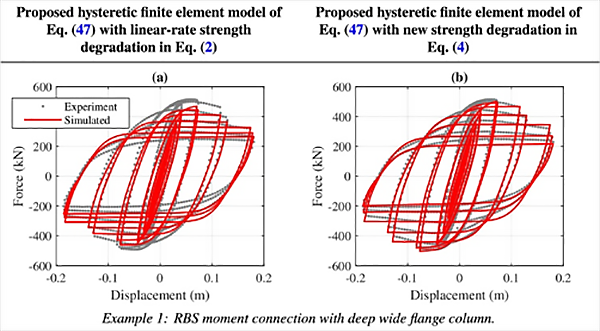Data Reuse Case Studies
Numerical and Experimental Validation
Hysteretic finite element model of structural beams (Amir et al. 2020)

Legacy data from the NEES cyberinfrastructure available in DesignSafe continues to prove useful for current NHERI researchers, including those seeking to validate new computational modeling frameworks. Researchers out of Penn States Institute for Computer and Data Sciences (Amir et al. 2020) reused experimental data on buckling at connections in steel structures from Ultra-Low Cycle Fatigue and Fracture in Steel Structures (Kanvinde et al. 2015) to validate one component of their hysteretic beam finite-element model. This model is incredibly versatile and can accommodate a variety of structural responses with diverse parameters and structural components. The researchers were able to recover all of the documentation and experimental information from the published dataset that they needed to simulate the experiment with their model, contributing to the demonstration of the broad validation of their model.
Publication Reusing Data
Amir, M., Papakonstantinou, K.G., and Warn, G.P. (2020). Hysteretic Beam Finite-Element Model including Multiaxial Yield/Capacity Surface Evolution with Degradations. Journal of Engineering Mechanics, 146(9), https://doi.org/10.1061/(ASCE)EM.1943-7889.0001767.
Dataset Reused
Kavinde et al. (2015). Ultra-Low Cycle Fatigue and Fracture in Steel Structures www.designsafe-ci.org/data/browser/public/nees.public//NEES-2005-0096.groups/Experiment-1/.
Impact of Data Reuse
Numerical and Experimental Validation Case Studies
Integrated seismic response predictions
Hysteretic finite element model of structural beams
Seismic Response of Cut and Cover Tunnels
Understanding Tsunami-Debris-Structure Interactions via SPH-FEM
Monitoring structural damage using CCTV data: a complete data lifecycle





